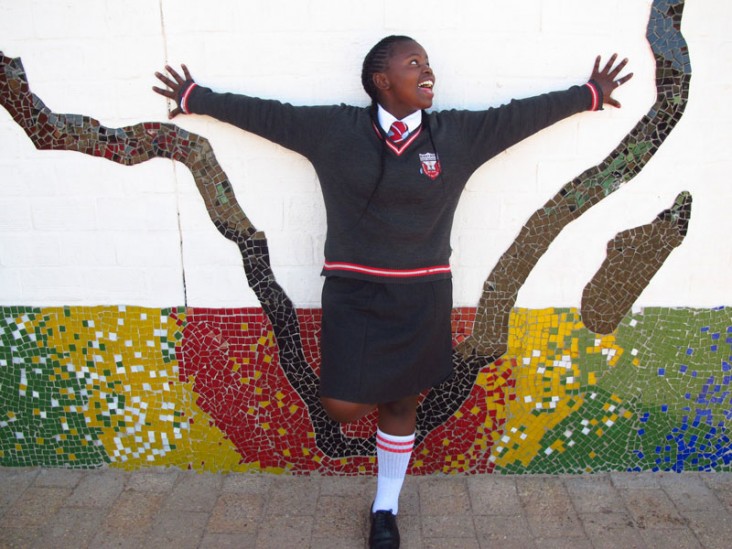- What We Do
- Agriculture and Food Security
- Democracy, Human Rights and Governance
- Economic Growth and Trade
- Education
- Ending Extreme Poverty
- Environment and Global Climate Change
- Gender Equality and Women's Empowerment
- Global Health
- Water and Sanitation
- Working in Crises and Conflict
- U.S. Global Development Lab

This year, the U.S. Agency for International Development’s (USAID’s) Office of HIV/AIDS celebrates 30 years of continued investments in combating HIV and AIDS around the world. In 1986, just 5 years after the discovery of an illness that later came to be known as AIDS, USAID established its HIV and AIDS portfolio. An initial $2 million investment allowed USAID to lead America’s response to the global epidemic by strategically capitalizing on existing programs to build capacity.
When HIV and AIDS first appeared in the global landscape, a lot was unknown. Fear and stigma of a mystery pandemic swept the world and diagnoses were almost always fatal. As USAID’s HIV and AIDS work began, the Agency placed an emphasis on preventing infections. USAID helped support microbicides, research around male circumcision and the reduction of mother-to-child-transmission of HIV. Our partnerships with UNAIDS and UNICEF produced Children on the Brink [PDF, 6.4MB], the first in a series of reports on children orphaned by AIDS. Within a decade, the HIV and AIDS portfolio grew to $441 million and expanded to 75 countries. USAID partnered with the International AIDS Vaccine Initiative, solidifying our commitment to developing AIDS vaccines that are safe, effective and accessible to everyone. These tremendous advances occurred prior to the launch of the world’s largest global health initiative, the U.S. President’s Emergency Plan for AIDS Relief (PEPFAR). As a key implementing agency under PEPFAR, USAID’s efforts have only intensified since PEPFAR’s 2003 establishment.
Today, HIV is no longer a fatal diagnosis for most. However, there is still work to be done to help reach those most vulnerable to infection. Currently, 37 million people are living with HIV, and approximately 15 million of them are on treatment. Looking forward, access to care and treatment for infected individuals is critical to epidemic control and at the crux of USAID’s response. Each program and project USAID supports moves us closer to achieving the ambitious UNAIDS 90-90-90 targets like those that provide countries with innovative and customized solutions, increase HIV testing and linkage to care, widen the coverage of antiretroviral treatment (ART), expand the capacity for viral load monitoring, evaluate service delivery models and improve retention of patients on ART.
USAID is uniquely positioned to address the HIV and AIDS epidemic from a development lens, keeping people and prosperity at the center of all the Agency does. As part of this, USAID recognized early on that those who are stigmatized and marginalized must always be part of the conversation and remain central to our work. Today, through the PEPFAR Determined, Resilient, Empowered, AIDS-free, Mentored and Safe (DREAMS) Initiative, USAID helps support adolescent girls and young women in sub-Saharan Africa, seeking to address the structural drivers that put them at risk of contracting HIV – drivers including poverty, gender inequality, sexual violence and a lack of education. The Agency also prioritizes key populations – men who have sex with men, transgender persons, sex workers and people who inject drugs – by working to reduce HIV transmission and to improve enrollment and retention in care. USAID is committed to ensuring these populations, who are often most at risk, can access care and treatment without the fear of stigma and discrimination.
As we celebrate this milestone, USAID is actively continuing to effectively test, treat and care for people around the world. As we set our sights on zero new HIV infections, we must find solutions for long-term sustainability. Under the USAID-led Sustainable Financing Initiative, we are working with partner governments to mobilize their domestic resources while becoming less dependent on foreign aid. If we are to truly achieve the vision of an AIDS-free generation, we must continue to respond to HIV and AIDS with sustainable solutions and shared partnerships.
Learn More
- Discover the #HIV30x30 social media campaign
- Find out more about USAID’s Office of HIV/AIDS
- Read Success Stories from our work around the world







Comment
Make a general inquiry or suggest an improvement.